Introduction
In today's fast-paced manufacturing environment, the role of AOI machines has become increasingly pivotal. These Automated Optical Inspection (AOI) systems are designed to ensure that printed circuit boards (PCBs) meet stringent quality standards, thereby enhancing overall production efficiency. With the rise of complex electronic devices, the demand for reliable optical inspection machines has surged, making them indispensable in modern production lines.
Understanding the Role of AOI Machines
The primary function of an AOI inspection machine is to detect defects in PCBs before they proceed to later stages of manufacturing. By utilizing advanced imaging technology and algorithms, these machines can identify issues such as soldering errors, component misplacements, and surface defects with remarkable precision. This capability not only streamlines the manufacturing process but also significantly reduces the likelihood of costly recalls and repairs.
Importance of Quality in Optical Inspection
Quality control is paramount in electronics manufacturing; even minor flaws can lead to catastrophic failures down the line. An effective automated optical inspection system ensures that each PCB adheres to rigorous quality standards by catching defects early on. The integration of high-quality optical inspection machines into production lines ultimately fosters trust among consumers and enhances brand reputation.
Overview of Bensun Technology's Offerings
Bensun Technology stands out in the field with its innovative range of AOI systems tailored for diverse manufacturing needs. Their products combine cutting-edge technology with user-friendly interfaces to deliver exceptional performance at competitive automatic optical inspection machine prices. With a commitment to quality and reliability, Bensun’s offerings are designed to meet the demanding requirements of today’s electronics manufacturers while providing long-term value.
What is an AOI Inspection Machine?
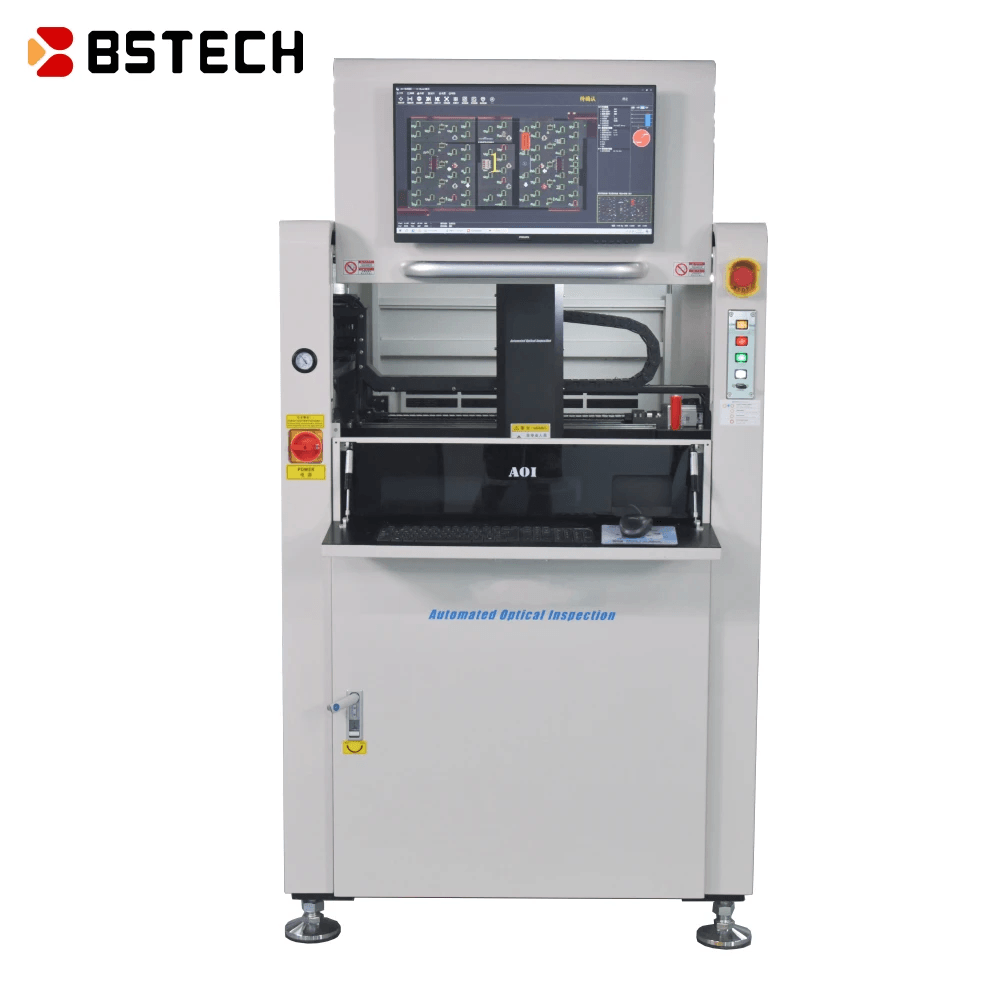
Automated Optical Inspection (AOI) machines are pivotal in modern manufacturing, particularly in the electronics sector. These sophisticated devices utilize high-resolution cameras and advanced algorithms to inspect printed circuit boards (PCBs) for defects, ensuring quality control throughout the production process. By implementing an AOI inspection machine, manufacturers can significantly enhance their efficiency and reliability while minimizing errors.
Definition and Purpose
An AOI inspection machine is designed to automatically examine electronic components on PCBs for any discrepancies or faults that could compromise performance. The primary purpose of these machines is to detect issues such as misaligned components, soldering defects, or missing parts before the product moves further along the assembly line. This proactive approach not only saves time but also reduces costs associated with rework and returns due to defective products.
Types of AOI Systems
There are several types of AOI systems tailored to meet various manufacturing needs, each with unique capabilities and features. The most common types include 2D AOI systems, which provide a flat image analysis of components, and 3D AOI systems that offer depth perception for more comprehensive inspections. Additionally, some models incorporate advanced technologies like multi-angle imaging or X-ray capabilities, making them suitable for complex PCB designs requiring meticulous scrutiny.
Key Features and Specifications
When considering an optical inspection machine, several key features come into play that can significantly impact its performance and usability. High-resolution cameras ensure detailed imaging while powerful software algorithms facilitate rapid defect detection by comparing images against predefined criteria. Other important specifications include processing speed, user interface design for ease of operation, and connectivity options for seamless integration into existing manufacturing workflows—essentially making an AOI machine for PCB a vital asset in any production environment.
How Automated Optical Inspection Works
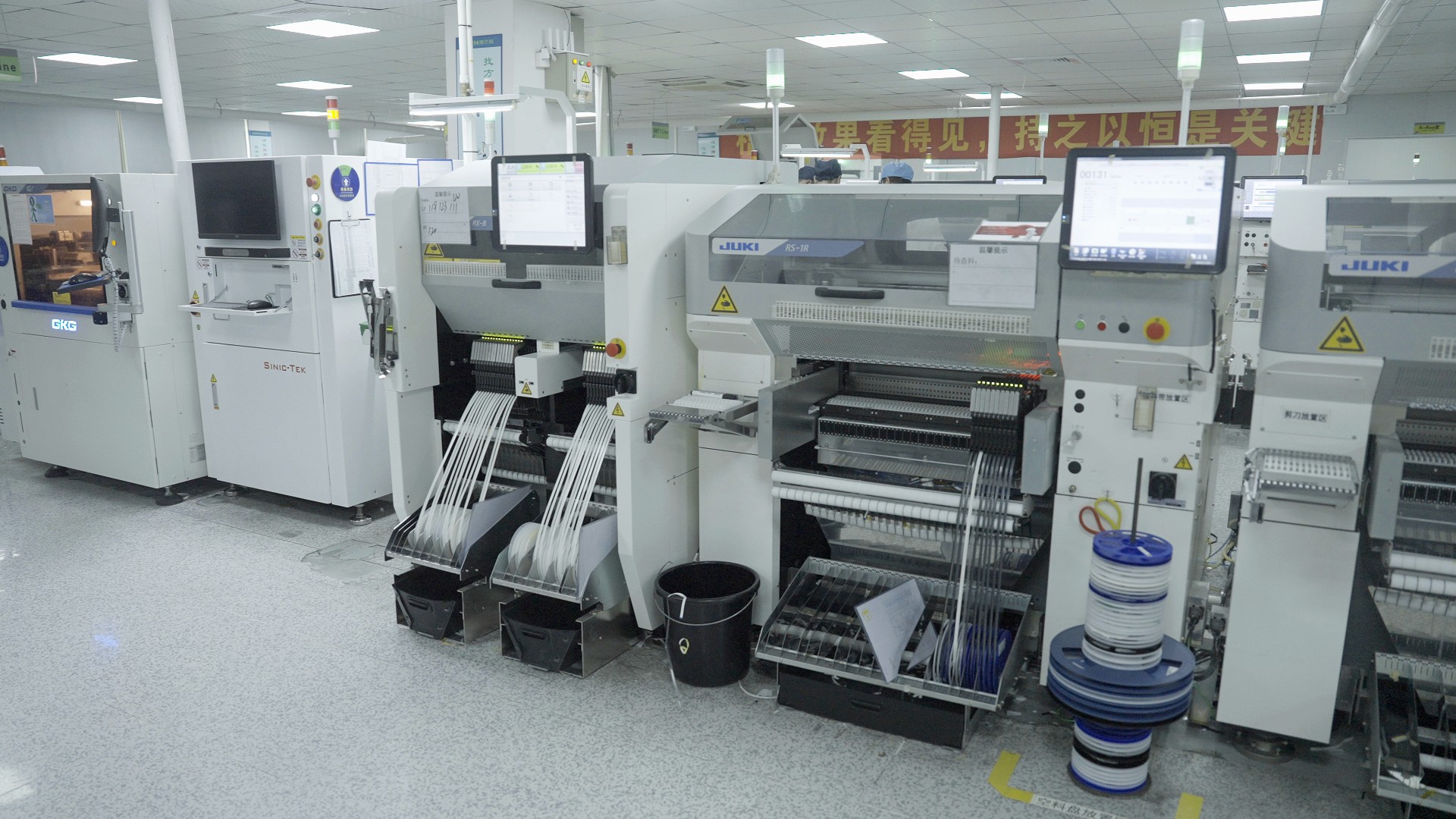
Automated Optical Inspection (AOI) is a sophisticated process that employs advanced imaging technology to assess the quality of printed circuit boards (PCBs) and other electronic components. The AOI inspection machine captures high-resolution images of the product being inspected and uses algorithms to analyze these images for defects or inconsistencies. Understanding how this process works can help manufacturers appreciate the value of integrating an AOI system into their production lines.
Automated Optical Inspection Working Principle
The working principle of an AOI machine for PCB revolves around capturing detailed images of the board's surface using high-resolution cameras. Once these images are obtained, the system compares them against pre-defined templates or reference images that represent ideal conditions. This automated optical inspection working principle allows for quick identification of defects, such as missing components, misaligned parts, or soldering issues, all without human intervention.
The efficiency of this process is further enhanced by advanced image processing techniques and artificial intelligence algorithms that enable real-time analysis. This means that any issues detected can be addressed immediately, reducing downtime and improving overall production efficiency. By automating this inspection step, manufacturers can ensure a higher level of quality control while minimizing human error.
The Technology Behind AOI Machines
The technology behind AOI machines is a blend of optics, electronics, and software engineering that work harmoniously to deliver precise results. At its core, an optical inspection machine utilizes high-definition cameras equipped with various lenses to capture detailed imagery from multiple angles and perspectives. These cameras are often coupled with sophisticated lighting systems that enhance visibility and contrast for better defect detection.
Moreover, modern AOI systems incorporate machine learning capabilities which allow them to adapt over time by learning from previous inspections and improving their accuracy in identifying defects. These advancements mean that today’s automated optical inspection machines can tackle increasingly complex assemblies with ease while maintaining a consistent level of performance across diverse manufacturing environments.
This technological prowess not only boosts productivity but also provides manufacturers with insightful data analytics regarding their production processes. Such insights can lead to continuous improvement efforts aimed at optimizing manufacturing practices and enhancing product quality.
Benefits of Automation in Inspection
The benefits of automation in inspection are manifold but primarily center around enhancing accuracy and reliability during the quality control phase. With an AOI inspection machine in place, companies can achieve significantly lower rates of false positives or negatives compared to manual inspections conducted by human operators. This heightened accuracy translates into reduced rework costs and improved customer satisfaction due to higher-quality products reaching the market.
Cost-effectiveness is another significant advantage associated with adopting automated optical inspection systems; while initial investments may seem steep—especially when considering automatic optical inspection machine prices—the long-term savings often outweigh these upfront costs. By catching defects early in the production cycle through efficient inspections, manufacturers minimize waste associated with faulty products and avoid costly recalls down the line.
Lastly, automation streamlines workflows by allowing operators to focus on more critical tasks rather than spending time on repetitive visual checks—this not only boosts morale but also fosters a culture geared toward innovation within manufacturing facilities.
The Advantages of Using AOI Machines for PCB
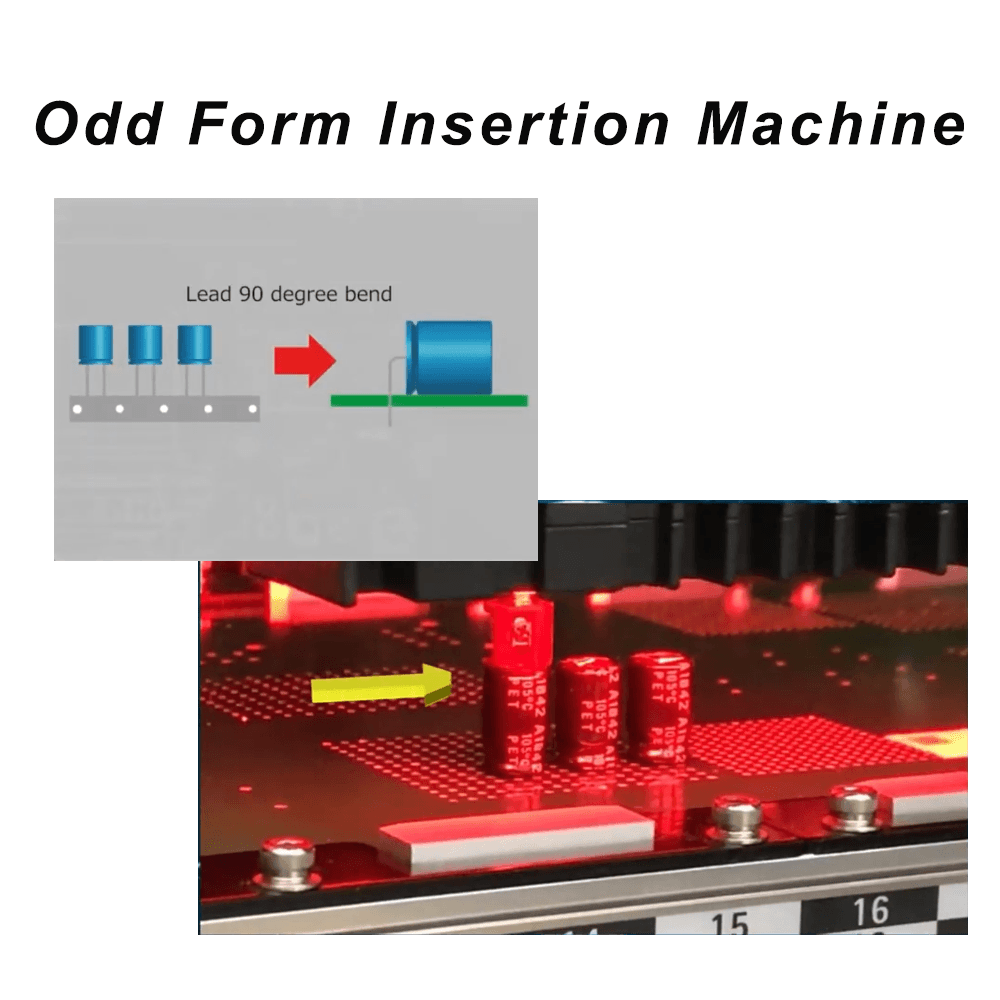
In the fast-paced world of electronics manufacturing, the advantages of using Automated Optical Inspection (AOI) machines for PCB production are numerous and impactful. These machines have revolutionized quality control processes, ensuring that every component is inspected with precision. As a result, manufacturers can deliver reliable products while minimizing costs and maximizing efficiency.
Enhanced Accuracy and Reliability
One of the standout features of an AOI inspection machine is its ability to provide enhanced accuracy in detecting defects on printed circuit boards (PCBs). Unlike manual inspections, which can be prone to human error, Automated Optical Inspection systems utilize advanced imaging technology to identify even the smallest discrepancies. This high level of precision not only ensures that each board meets strict quality standards but also builds trust with clients who rely on consistent performance from their products.
The reliability of AOI machines further solidifies their place in modern manufacturing processes. By consistently delivering accurate results, these systems help reduce the chances of faulty products reaching consumers. Consequently, manufacturers can maintain their reputation for quality and reliability in a competitive market.
Reduction of Production Errors
Another significant advantage offered by AOI machines is the substantial reduction in production errors during PCB assembly. The automated nature of these systems allows for real-time monitoring and immediate feedback during the production process. This means that any defects or inconsistencies can be detected early on, preventing costly rework or scrapping of entire batches.
By integrating an optical inspection machine into their workflow, manufacturers can streamline operations and enhance overall productivity. With fewer errors occurring on the production line, teams can focus on innovation and efficiency rather than constantly addressing issues caused by faulty components or poor assembly practices. Ultimately, this leads to a smoother manufacturing process where quality is prioritized from start to finish.
Cost-Effectiveness in Manufacturing
Investing in an Automatic Optical Inspection machine may seem like a hefty upfront cost; however, it proves to be cost-effective over time when considering long-term savings. By catching defects earlier in the production process, companies save money on labor costs associated with rework and repairs as well as potential losses from returns due to faulty products. The reduction in waste also contributes positively to a manufacturer’s bottom line.
Moreover, AOI systems typically require less labor than traditional inspection methods since they automate much of the quality control process. This shift allows companies to allocate resources more efficiently while maintaining high-quality standards across all aspects of production. In essence, embracing automated optical inspection not only enhances product integrity but also fosters financial sustainability within manufacturing operations.
Comparing Automatic Optical Inspection Machine Prices

When considering an investment in an AOI inspection machine, understanding the pricing landscape is crucial. The price of these machines can vary widely based on several factors, including technology, features, and brand reputation. In this section, we will explore what influences AOI machine prices, examine the price range of various models, and discuss the long-term savings associated with investing in high-quality Automated Optical Inspection systems.
Factors Influencing AOI Machine Prices
Several elements come into play when determining the cost of an AOI inspection machine. Firstly, the complexity of the Automated Optical Inspection working principle affects pricing; machines equipped with advanced imaging technology or sophisticated algorithms tend to be more expensive. Additionally, features such as speed, accuracy, and user-friendliness can significantly impact costs—machines designed for high-volume production lines often carry a premium due to their enhanced capabilities.
Brand reputation also plays a role; established manufacturers like Bensun Technology may charge more for their optical inspection machines due to their proven reliability and customer support services. Furthermore, customization options and integration capabilities with existing production lines can add to the overall cost of an AOI system. Understanding these factors helps potential buyers make informed decisions about which model best fits their needs without breaking the bank.
Price Range of Various Models
The price range for AOI systems varies considerably depending on specifications and functionalities offered by different models. Basic entry-level models suitable for small-scale operations can start at around $20,000 to $30,000. On the other hand, high-end automatic optical inspection machines that cater to complex PCB assembly processes may reach upwards of $100,000 or more.
Mid-range options typically fall between $40,000 and $80,000 and often provide a balance between performance and affordability. It's essential for businesses to assess their specific requirements in terms of throughput and inspection accuracy when selecting an appropriate model within this range. By doing so, they can ensure they invest wisely in an AOI machine that meets both current needs and future growth potential.
Investment vs. Long-Term Savings
Investing in a quality AOI machine for PCB manufacturing is not just about upfront costs; it’s also about evaluating long-term savings that come from enhanced efficiency and reduced errors over time. While initial investments might seem daunting compared to cheaper alternatives or manual inspections techniques, automated optical inspection provides significant returns through increased production rates and decreased rework costs due to fewer defects.
Moreover, automation leads to improved consistency in quality control processes—meaning less waste generated from faulty products which ultimately translates into cost savings over time. Businesses must weigh these factors carefully when considering automatic optical inspection machine prices against potential long-term benefits that could enhance profitability significantly.
Bensun's JUKI AOI Machine for SMT
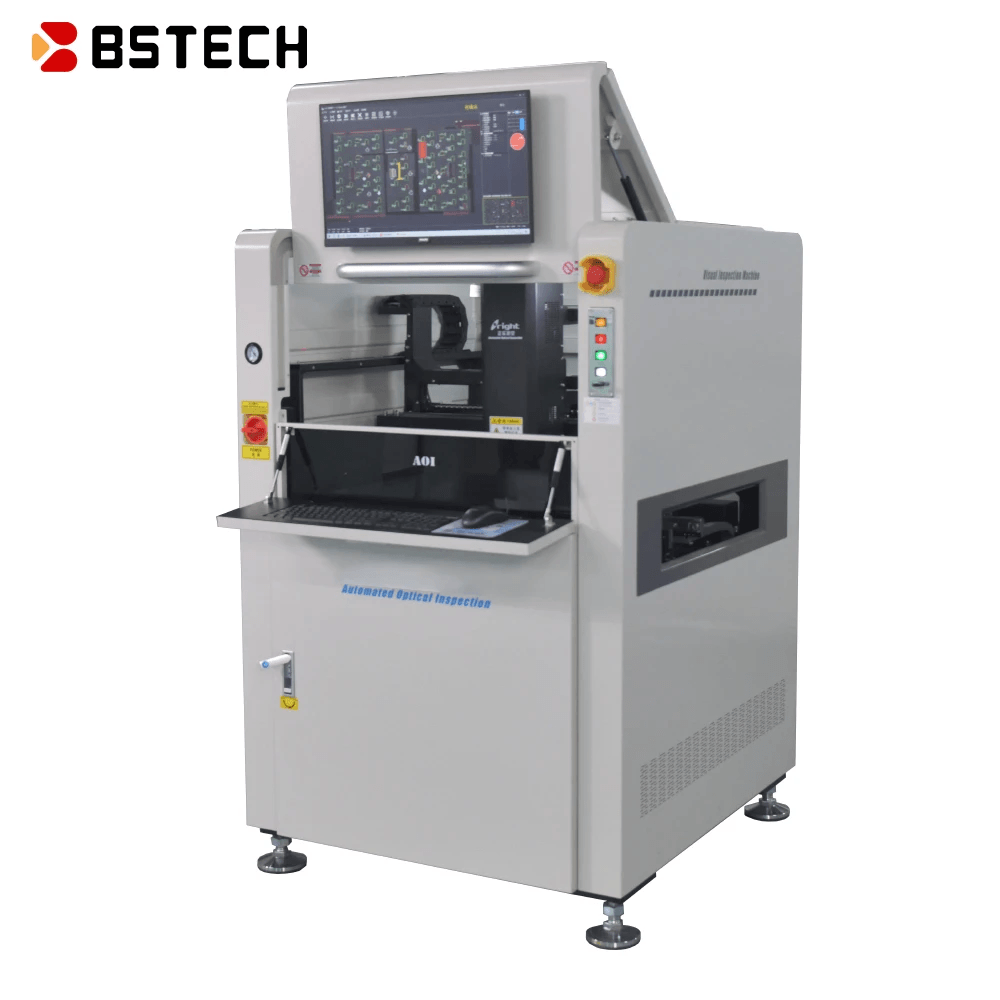
Bensun Technology has made a significant mark in the realm of automated optical inspection with its JUKI AOI machine tailored for surface mount technology (SMT). This sophisticated AOI inspection machine is designed to enhance the quality control processes in PCB manufacturing, ensuring that every component is accurately inspected and verified. With a blend of advanced technology and user-friendly features, Bensun’s offerings stand out in the competitive landscape of AOI systems.
Features of Bensun’s Optical Inspection Machine
Bensun’s optical inspection machine boasts an array of impressive features that cater specifically to the needs of PCB manufacturers. Equipped with high-resolution cameras and advanced image processing algorithms, this automated optical inspection (AOI) system can detect even the minutest defects on PCBs. Additionally, its intuitive interface allows operators to easily configure settings, making it a breeze to switch between different production runs while maintaining top-notch accuracy.
The flexibility of Bensun's AOI machines extends beyond just detection; they also offer customizable reporting options that provide valuable insights into production quality over time. With built-in data analytics capabilities, manufacturers can track trends and identify recurring issues, leading to proactive measures that enhance overall efficiency. Furthermore, compatibility with various manufacturing processes makes this optical inspection machine a versatile addition to any production line.
Performance and Reliability of Bensun’s Products
When it comes to performance, Bensun's JUKI AOI machine does not disappoint. The automated optical inspection working principle ensures rapid yet precise inspections without compromising reliability—a crucial factor in high-volume PCB manufacturing environments. Users have reported significant reductions in false positives and negatives compared to other models on the market, leading to increased confidence in product quality.
Reliability is further enhanced by robust construction and rigorous testing standards employed during manufacturing. Each unit undergoes extensive quality assurance checks before it reaches customers, ensuring consistent performance under various operating conditions. As a result, businesses investing in this AOI machine for PCB applications can expect minimal downtime and maximum productivity.
Customer Testimonials and Case Studies
Customers who have integrated Bensun's JUKI AOI machines into their operations rave about their effectiveness in improving production outcomes. One notable case study highlights how a mid-sized electronics manufacturer reduced defect rates by over 30% after implementing this automated optical inspection solution into their workflow. Testimonials frequently mention how easy it is for staff to adapt to using the system due to its user-friendly design.
Moreover, clients appreciate the ongoing support provided by Bensun Technology post-purchase; they emphasize how responsive customer service has helped them maximize their investment in an automatic optical inspection machine price range that remains competitive within the industry. These positive experiences reinforce why many companies consider Bensun as a trusted partner when seeking reliable solutions for enhancing quality control through advanced optical inspection technologies.
Conclusion
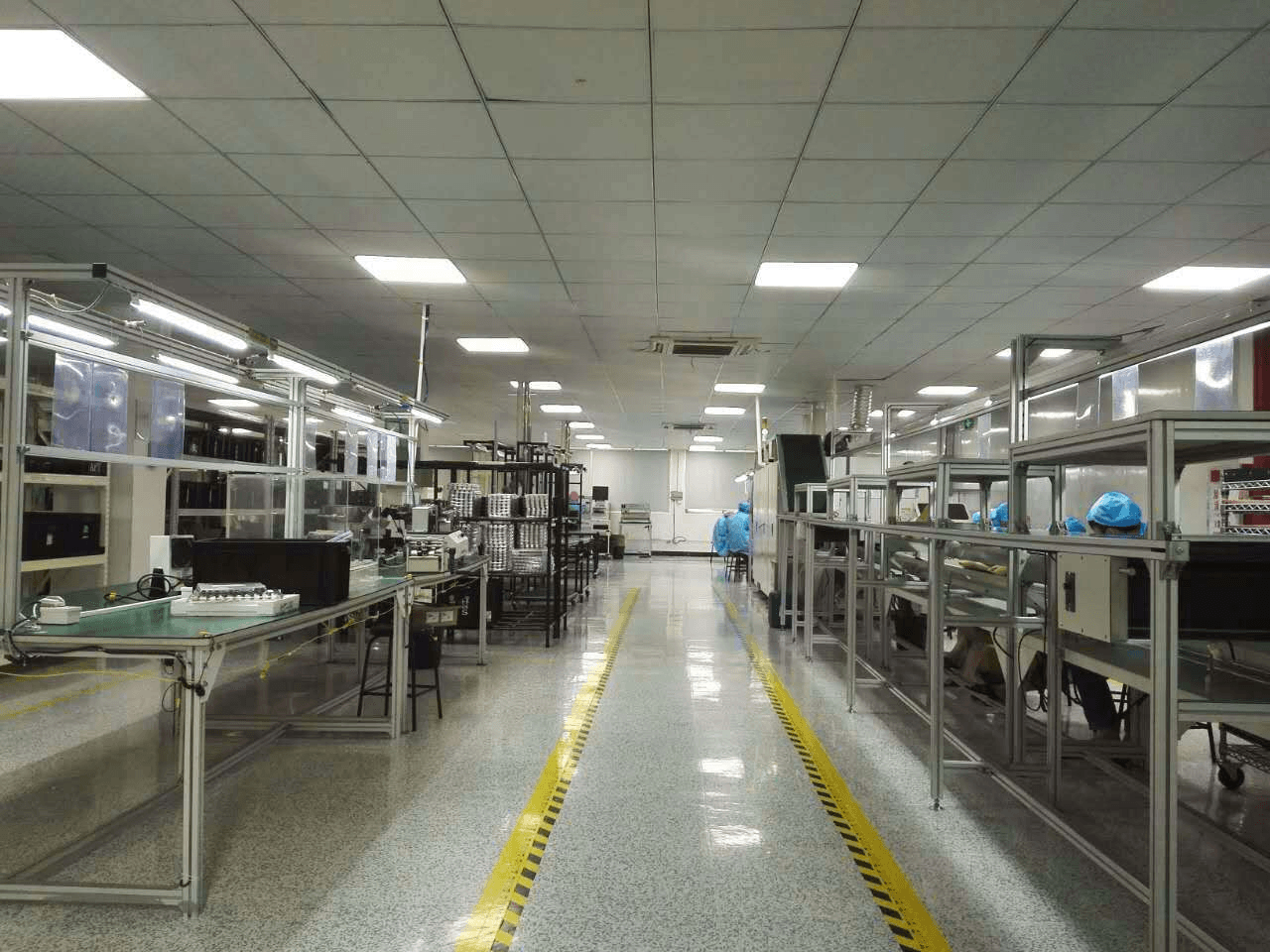
In wrapping up our exploration of AOI systems and their critical role in modern manufacturing, it’s clear that making informed choices is essential for businesses aiming to enhance quality and efficiency. The right aoi inspection machine can drastically reduce errors during production, ensuring that the final product meets the highest standards. By understanding the various types of automated optical inspection machines available, manufacturers can select the best fit for their specific needs.
Making Informed Choices in AOI Systems
When choosing an automated optical inspection (AOI) system, companies must consider various factors such as accuracy, speed, and cost. The automatic optical inspection machine price often reflects these features, so it's wise to balance budget constraints with performance requirements. Investing time in research will lead to a more strategic purchase decision that aligns with long-term goals.
The Future of Automated Optical Inspection
The future of automated optical inspection looks promising as technology continues to evolve at a rapid pace. Enhanced algorithms and machine learning capabilities are set to revolutionize how AOI machines analyze data, improving both speed and accuracy significantly. As industries increasingly embrace automation, we can expect even more sophisticated AOI systems that integrate seamlessly into manufacturing processes.
Why Bensun Stands Out in the Industry
Bensun Technology has carved out a niche in the competitive landscape of AOI machines by offering cutting-edge technology combined with exceptional customer support. Their commitment to innovation ensures that each optical inspection machine is equipped with features designed for reliability and performance tailored for PCB applications. With glowing customer testimonials backing their products, Bensun stands out as a trusted partner in achieving manufacturing excellence.
